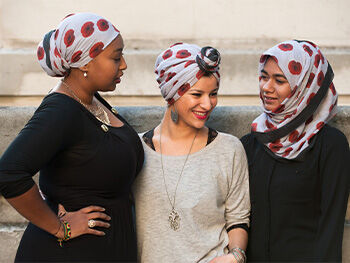Women at Home
It is beyond doubt that there are hundreds of thousands of individual stories about Muslim women in the war. Unlike the Second World War, Muslim women were not a direct part of the war effort on the western front in the First World War. Most women stayed at home and continued to raise their children alone. Many letters from soldiers show how they were concerned and adamant that their wives received the money they sent home.
There are some stories recorded of how wives and sisters were affected when the men left India for the war. One such story records how one broke down as her husband was leaving. But not as much is recorded about the strength of Muslim women during this time as there should be. Needless to say that the majority were strong, received letters from their family members at war and sent them when they could. As is too often the case in society, their roles will never be given due credit, and a standalone study of their lives during the First World War is much needed.
Women in France
The women in France seemed to have a profound effect on Muslim soldiers who stayed in the country for months. Aside from encouraging them to learn the language, the soldiers were attended to by the French housekeepers. While there were a few marriages, this was not common. That being said, there was an obvious physical fascination, and soldiers were intrigued at the prospect of intimate relations with white women. Letters to their friends and family would often describe French women as ‘fairies’.
Amjam-Ud-Din Khan, of the 38th C.I.Horse, wrote to a friend: ‘They are beautiful as fairies, but for us they are like mothers and sisters’.
Another letter shows clear attraction to French women, comparing them to paradisal beings, and even sending a photograph. It describes a party at the hotel: ‘What robes these fairies wore, like the Houris of Paradise! … I send you a picture of a girl. When you see it, you will understand what beauty there is in France’. The censor reported: ‘indecent photograph enclosed. Letter passed – photograph destroyed’.
The Poppy Hijab 
Last year, fashion designer Tabinda-Kauser Ishaq, 25, created a headscarf decorated with poppies in order to commemorate those who fell in the First World War. ‘There are a number of ideas behind the headscarf,’ she explains. ‘It’s a way for Muslims to mark Remembrance Day, and it works as a reminder of the number of Muslim soldiers who fought in this war, which isn’t widely known’. Now to be sold in stores and as part of the official Poppy Appeal, this is a fine example of how the Muslim contribution to the war is living on.